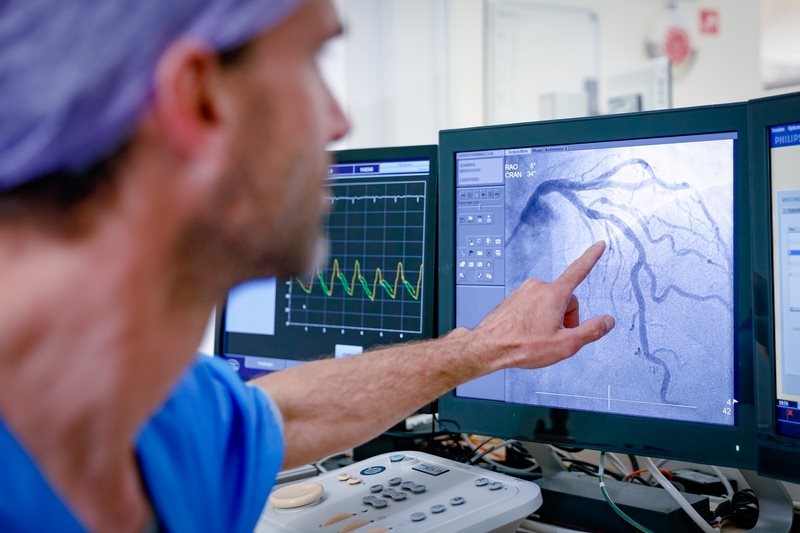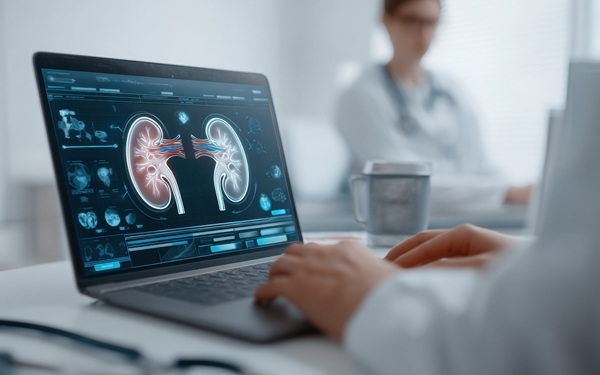Catheters in Dialysis Linked to High Risk of Infection
|
By HospiMedica International staff writers Posted on 03 Mar 2013 |
A new study shows that dialysis patients using catheters for blood access have the highest risks for death, infections, and cardiovascular (CV) events.
Researchers at the University of Calgary (Canada), the University of Otago (Christchurch, New Zealand), and other institutions conducted a systematic review of cohort studies to evaluate the associations between type of vascular access (arteriovenous fistula, arteriovenous graft, and central venous catheter) and risk for death, infection, and major CV events. The researchers searched MEDLINE, EMBASE, and other article reference lists and extracted data describing study design, participants, vascular access type, clinical outcomes, and risk for bias. In all, 62 cohort studies comprising 586,337 participants met the inclusion criteria.
The results showed that when compared with patients with an arteriovenous fistula, those using catheters had a 38% higher risk of experiencing a major heart-related event, a 53% higher risk of dying, and more than twice the risk of developing fatal infections. Patients with arteriovenous grafts had an 18% increased risk of dying and a 36% increased risk of developing fatal infections compared to those with an arteriovenous fistula, but they did not have an increased risk of experiencing a major heart-related event. The study was published early online on February 21, 2013, in the Journal of the American Society of Nephrology (JASN).
“Our findings are reflected in current clinical practice guidelines, which promote fistulas as the preferred form of bloodstream access in hemodialysis patients,” said lead author Pietro Ravani, MD, of the University of Calgary, and colleagues. “Better quality data are needed, but not from studies with the same design as those already available. In fact, our cumulative meta-analysis shows that this information was already available 10 years ago.”
An arteriovenous fistula is currently the most recommended access for kidney disease patients who must undergo dialysis, created by connecting a patient's vein and artery to form a long-lasting site through which blood can be removed and returned. Alternatively, in patients who are unsuitable for a fistula, an arteriovenous graft—a plastic conduit between an artery and a vein—may be used. Many patients, however, prefer a catheter, for reasons that include inadequate preparation for dialysis, avoidance of surgery, or fear of needles (since the connection to the dialysis machine via a catheter does not require needles).
Related Links:
University of Calgary
University of Otago
Researchers at the University of Calgary (Canada), the University of Otago (Christchurch, New Zealand), and other institutions conducted a systematic review of cohort studies to evaluate the associations between type of vascular access (arteriovenous fistula, arteriovenous graft, and central venous catheter) and risk for death, infection, and major CV events. The researchers searched MEDLINE, EMBASE, and other article reference lists and extracted data describing study design, participants, vascular access type, clinical outcomes, and risk for bias. In all, 62 cohort studies comprising 586,337 participants met the inclusion criteria.
The results showed that when compared with patients with an arteriovenous fistula, those using catheters had a 38% higher risk of experiencing a major heart-related event, a 53% higher risk of dying, and more than twice the risk of developing fatal infections. Patients with arteriovenous grafts had an 18% increased risk of dying and a 36% increased risk of developing fatal infections compared to those with an arteriovenous fistula, but they did not have an increased risk of experiencing a major heart-related event. The study was published early online on February 21, 2013, in the Journal of the American Society of Nephrology (JASN).
“Our findings are reflected in current clinical practice guidelines, which promote fistulas as the preferred form of bloodstream access in hemodialysis patients,” said lead author Pietro Ravani, MD, of the University of Calgary, and colleagues. “Better quality data are needed, but not from studies with the same design as those already available. In fact, our cumulative meta-analysis shows that this information was already available 10 years ago.”
An arteriovenous fistula is currently the most recommended access for kidney disease patients who must undergo dialysis, created by connecting a patient's vein and artery to form a long-lasting site through which blood can be removed and returned. Alternatively, in patients who are unsuitable for a fistula, an arteriovenous graft—a plastic conduit between an artery and a vein—may be used. Many patients, however, prefer a catheter, for reasons that include inadequate preparation for dialysis, avoidance of surgery, or fear of needles (since the connection to the dialysis machine via a catheter does not require needles).
Related Links:
University of Calgary
University of Otago
Latest Critical Care News
- Magnetically Guided Microrobots to Enable Targeted Drug Delivery

- Smart Nanomaterials Detect and Treat Traumatic Brain Injuries Simultaneously
- Earlier Blood Transfusion Could Reduce Heart Failure and Arrhythmia in Heart Disease Patients
- 'Smart' Shirt Detects Epileptic Seizures in Real Time
- Skin Patch Measures Effectiveness of Flu/COVID Vaccines in 10 Minutes
- Complete Revascularization Reduces Risk of Death from Cardiovascular Causes
- Tiny Fish-Inspired Robots Navigate Through Body to Deliver Targeted Drug Therapy
- Coronary Artery Stenosis Could Protect Patients from Pulmonary Embolism Effects
- Sweat-Powered Sticker Turns Drinking Cup into Health Sensor
- Skin-Mounted 3D Microfluidic Device Analyzes Sweat for Real-Time Health Assessment
- New Therapeutic Brain Implants to Eliminate Need for Surgery
- Stem Cell Patch Gently Heals Damaged Hearts Without Open-Heart Surgery
- Biomaterial Vaccines to Make Implanted Orthopedic Devices Safer
- Deep Learning Model Predicts Sepsis Patients Likely to Benefit from Steroid Treatment
- Programmable Drug-Delivery Patch Promotes Healing and Regrowth After Heart Attack
- Breakthrough Ultrasound Technology Measures Blood Viscosity in Real Time
Channels
Surgical Techniques
view channel
New Study Findings Could Halve Number of Stent Procedures
When a coronary artery becomes acutely blocked during a heart attack, opening it immediately is essential to prevent irreversible damage. However, many patients also have other narrowed vessels that appear... Read more
Breakthrough Surgical Device Redefines Hip Arthroscopy
Hip arthroscopy has surged in popularity, yet surgeons still face major mechanical constraints when navigating deep joint spaces through traditional cannulas. Limited tool mobility and the need for an... Read morePatient Care
view channel
Revolutionary Automatic IV-Line Flushing Device to Enhance Infusion Care
More than 80% of in-hospital patients receive intravenous (IV) therapy. Every dose of IV medicine delivered in a small volume (<250 mL) infusion bag should be followed by subsequent flushing to ensure... Read more
VR Training Tool Combats Contamination of Portable Medical Equipment
Healthcare-associated infections (HAIs) impact one in every 31 patients, cause nearly 100,000 deaths each year, and cost USD 28.4 billion in direct medical expenses. Notably, up to 75% of these infections... Read more
Portable Biosensor Platform to Reduce Hospital-Acquired Infections
Approximately 4 million patients in the European Union acquire healthcare-associated infections (HAIs) or nosocomial infections each year, with around 37,000 deaths directly resulting from these infections,... Read moreFirst-Of-Its-Kind Portable Germicidal Light Technology Disinfects High-Touch Clinical Surfaces in Seconds
Reducing healthcare-acquired infections (HAIs) remains a pressing issue within global healthcare systems. In the United States alone, 1.7 million patients contract HAIs annually, leading to approximately... Read moreHealth IT
view channel
EMR-Based Tool Predicts Graft Failure After Kidney Transplant
Kidney transplantation offers patients with end-stage kidney disease longer survival and better quality of life than dialysis, yet graft failure remains a major challenge. Although a successful transplant... Read more
Printable Molecule-Selective Nanoparticles Enable Mass Production of Wearable Biosensors
The future of medicine is likely to focus on the personalization of healthcare—understanding exactly what an individual requires and delivering the appropriate combination of nutrients, metabolites, and... Read moreBusiness
view channel
Philips and Masimo Partner to Advance Patient Monitoring Measurement Technologies
Royal Philips (Amsterdam, Netherlands) and Masimo (Irvine, California, USA) have renewed their multi-year strategic collaboration, combining Philips’ expertise in patient monitoring with Masimo’s noninvasive... Read more
B. Braun Acquires Digital Microsurgery Company True Digital Surgery
The high-end microsurgery market in neurosurgery, spine, and ENT is undergoing a significant transformation. Traditional analog microscopes are giving way to digital exoscopes, which provide improved visualization,... Read more
CMEF 2025 to Promote Holistic and High-Quality Development of Medical and Health Industry
The 92nd China International Medical Equipment Fair (CMEF 2025) Autumn Exhibition is scheduled to be held from September 26 to 29 at the China Import and Export Fair Complex (Canton Fair Complex) in Guangzhou.... Read more














